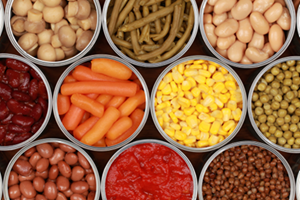Sign up to be notified of our new blog posts.
Food Processing Equipment: Three Essential Steps to Make the Most of 2023
Posted on November 09, 2022

For many operators, this involves a new look at how they configure and manage their core processing equipment.
In the typical food processing operation, equipment like cooking kettles, tanks and mixers form the backbone of the production pipeline. Sub-optimized quality or configuration of this core equipment can limit production flexibility, create operational bottlenecks, and severely hamper overall performance.
And given the challenges of today’s marketplace, those are risks that must be avoided.
Recommendations for food processors
To help, we’ve zeroed in on three essential steps food processors should take to make the most of the opportunity that 2023 promises to bring:
- Ensure processing equipment is aligned with changing production needs.
As buyer behavior changes post-Covid, many food processing operations are trying to increase throughput to keep up with higher demand. Depending on the product, inflation concerns may also be affecting demand (in many cases causing higher demand). Further, a shortage of workers may be limiting capacity. The result is that operations equipped to handle a certain volume may now be struggling to handle more.
To address this reality, operators should review the capacity and configuration of their vessels to align with their current needs. For example, upgrading from a 100-gallon kettle to a 200-gallon, or adding a second 100-gallon kettle with staggered offloading, may be necessary to increase capacity (for more configuration ideas, read Expanding Production Without Expanding Your Plant).
New or changed ingredients can also be a mismatch for your vessel’s agitation system. A recent study by Food Processing indicates that 32% of manufacturers will be working on removing sugars from their products, and in some cases, they may use natural sweeteners like syrup, fruit juices or honey to replace. Such adjustments may require a different agitation system to efficiently mix the products. Similarly, processors planning to add fruits or vegetables to their product or move away from sunflower oil due to short supply, should understand the impact on mixing in the vessel. Here’s a great article to help you align: Factors That Determine the Best Agitator Design for Your Processing Operation. - Get applications engineers involved early.
In its 2022 State of Food Manufacturing study, Food Engineering found that 59% of food manufacturers plan to expand or retrofit their food processing plants. If your company is in the majority, you will be well-served to engage with your equipment vendor’s applications engineers as early in the process as possible. This allows input from all your teams—R&D, production, operations—to be considered in the equipment design and configuration. To maximize efficiency, it is far better to build equipment around your product, your infrastructure, and your production goals, than retrofitting your process around the equipment.
This is also the case when preparing to launch a new product. Early involvement from applications engineers can help you minimize risks as you move from bench-top equipment to trial batch to commercial production. If your equipment vendor offers a testing lab, you can use that to determine how your ingredients and processes will behave at scaled production levels and identify improvements to the mixing and cooking process.
For more on the benefits of early involvement from applications engineers see The Earlier the Better: When Food Manufacturers Should Bring Processing Equipment Engineers into New Product Development. Establish a proactive vessel maintenance program.
Recently, Food Processing found that nearly two-thirds of plant operators experience either daily or weekly failures of critical plant assets that result in unplanned downtime. For operators faced with 2023’s demand for throughput and efficiency, that is untenable.
Much better to build a proactive maintenance program that makes awareness, inspection and preventive maintenance a priority every day of the year, an initiative found to reduce downtime and maintenance costs by up to 70%. Here are some of the important steps plant production and maintenance teams can take to proactively maintain your plant processing vessels.- Keep good vessel records – Includes parts list, drawings, and records of past service work.
- Assess operating factors that impact your vessels – Includes product makeup (e.g., viscosity, prevalence of acidic or salt-based ingredients) and utilization (e.g., run-time). Can be used to create a proactive replacement schedule for things like driveshafts, bearings and seals.
- Train production team to recognize early warning signs – Listen for grinding, rumbling or greater than usual vibration during mixing operations. Look for wear on agitator scrapers, pins, and ball valve seals.
- Keep an in-house spare parts inventory – Includes common wear items, like seals, bearings, scrapers, and pins. It is also beneficial to keep an inventory of long lead-time parts that could shut you down for an extended period if a custom replacement part needs to be fabricated, such as drive assemblies.
The challenges facing food processors in 2023 are more varied and fickle than we’ve seen in a while, presenting both threats and opportunities. But taking these three steps will certainly enhance your ability to navigate through them successfully.
For more information, or to discuss your situation with a Lee Industries Applications Engineer, just contact us. We would be glad to help.
Comments
Add Your Own Comment